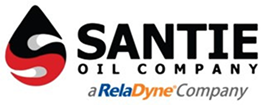The primary elements of lubricants and oils alike require some understanding to determine the best fit. It's easy to purchase the wrong fluids and attempt to make do, but that's where we come into play. Below we discuss the most essential components of a lubricant to help you understand the anatomy and make the most suitable decisions for your operations.
The Base
The primary and initial component in any lubricant is the base oil. This is the baseline representation of the lubricant's performance and integrity as it relates to its machine or application. There are five groups that the industry uses to classify the varying levels of base oils and their compounds, and each group helps buyers, engineers, and distributors understand the baseline requirements and appropriate conversion processes.
Regardless of its housing category, the base oil accounts for up to 90 percent of the lubricant's makeup. After standard refining, the classes are best understood by evaluating the wax content of a base and helping designate the apparent differences between full synthetic, synthetic, and conventional oil formulas.
The Additives
The second ingredient to understand when breaking down the anatomy of a lubricant is its addictive properties. The additives in each base oil will help create clear distinctions on what that specific lubricant or oil can do and which application it will serve best. Even when base oil ingredients are the same across the board, the designated additive creates differences in applications and performances.
Additives include mediums such as detergents, dispersants, foam inhibitors, and cold flow enhancers. Each of these additives performs distinct functions and directly relates to the type of machining or applications it suits. Partner with a reputable lubricant wholesale distributor for clear direction on additive packages and application compatibility.
The Viscosity
The viscosity is the last component in a lubricant but plays a significant role in performance standards and expectations. When a base oil houses a strict viscosity modifier component, the lubricant can perform as needed and adjust per the external environment changes. The primary example of this is a vehicle's engine oil.
A modifier helps smooth the oil transition from one season to the next. So, when oils typically run thin in the summer, you don't need to perform a full system reset by winter when the oils run thick. The modifier plays a communicator in ensuring the oil adapts to the external environment and runs as necessary, whether thick or thin.
Santie Oil Company is an industry-leading whole distributor and can help you refine and define your distinct needs. We help you break down the anatomy of the lubricants you need to ensure customer satisfaction, optimal performance, and machining efficiency. Partner with a member of our valued staff to learn more about our vast inventory selection and offerings.

